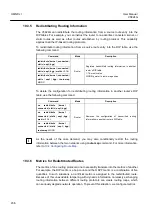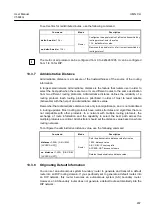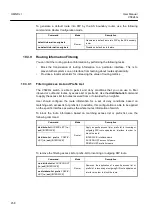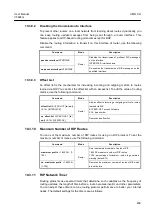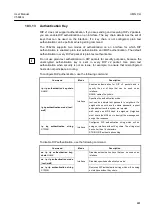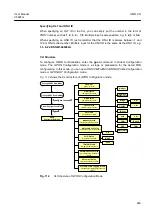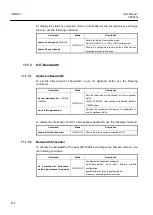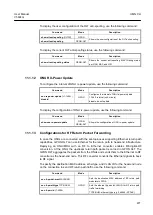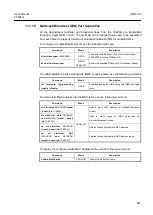
UMN:CLI
User Manual
V5824G
468
11 GPON Configuration
Gigabit Passive Optical (GPON) technology has the active network elements OLT
(Optical Line Termination) at the central office and ONU/ONT (Optical Network Unit /
Termination) at the subscriber site.
Typical GPON configuration consists of a single PON port at the OLT and a number of
ONUs connected to it over a single fiber feeder.
Generally, a Time Division Multiplexing (TDM) is used in the downstream data
transmission. OLT broadcasts data to every ONUs using TDM approach. Every ONU
receives each downstream frame and pinks up only that data addressed to it by the OLT.
Optionally, FEC coding and AES encryption are applied to the user data.
To deliver data to OLT in upstream direction, the OLT implements a Time Division Multiple
Access (TDMA) approach. ONU (ONT) receives data from the user ports and combines
them into bursts. Each ONU (ONT) transmits its data in a strict accordance with the
Bandwidth Map generated by OLT for the synchronization. Using DBA mechanism OLT
can rearrange upstream bandwidth
h to provide more resources to those ONU tightly loaded with traffic.
The ONU provides network termination for a Passive Optical Network (PON) in the home
or business. The ONU connects via a high speed interface to the PON network and
provides subscriber access to data (Ethernet), voice (POTS) and video services. GPON
gives edge networks an unparalleled bandwidth advantage in their ability to offer truly
high speed triple play service (i.e. voice, video and data) especially when compared with
existing cable or DSL services.
The following figure is the example of the GPON network set up.
Fig. 11.1
Example of GPON Network
Basic Operation
•
Configure OLT and ONU (ONT) in
GPON-OLT Configuration
mode.
•
For common ONU (ONT) configuration, create a profile in
ONU Profile Configuration
mode.
•
If the created profile is modified, the profile will be applied to the ONUs (ONTs)
automatically.



